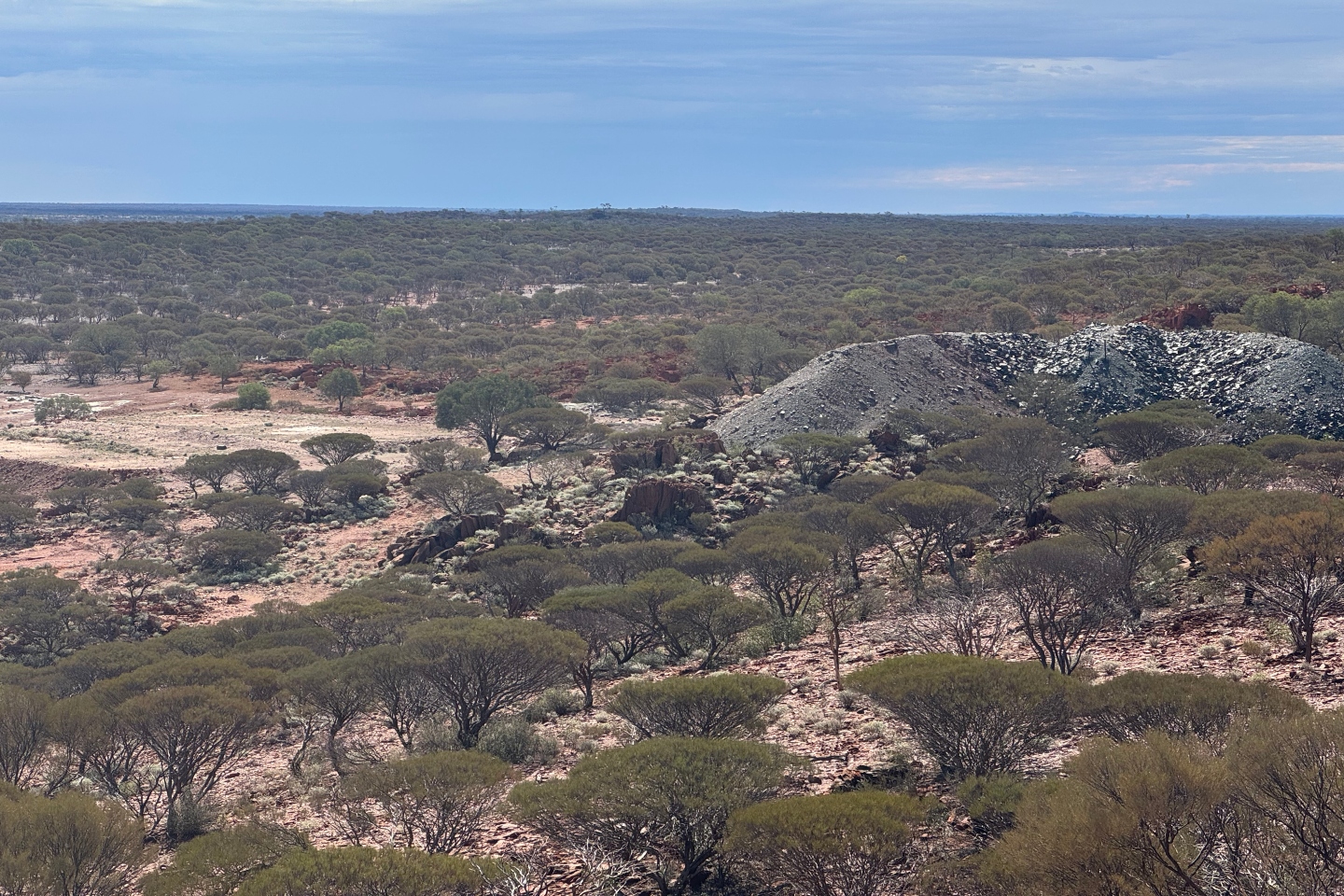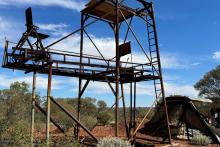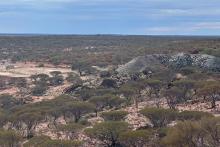Neometals Ltd has launched a maiden drilling campaign at its Barrambie project in WA’s Barrambie Greenstone Belt, where records indicate more than 27,000 ounces of gold were produced at an average grade of 27.8 grams per tonne. From reviews of multiple historic mine records, Neometals estimates an initial project exploration target of between 8 million tonnes at 1.3g/t and 10.5mt at 2.3g/t for 335,000 and 775,000 ounces of gold respectively.


Neometals has launched a maiden drilling campaign at its Barrambie gold project in Western Australia’s Barrambie Greenstone Belt, where historic records indicate more than 27,000 ounces of gold were produced at an average grade of 27.8 grams per tonne (g/t).
From reviews of multiple historic mine records, Neometals estimates an initial project exploration target of between 8 million tonnes at 1.3g/t and 10.5mt at 2.3g/t for 335,000 and 775,000 ounces of gold respectively.
The company’s 550 square kilometre tenement area embraces about 40km of strike along the Barrambie Greenstone Belt, halfway between Sandstone and Meekatharra.
Based on its estimated exploration target, Neometals sees the Barrambie project as possessing strong potential for multiple and potentially high-grade gold occurrences.
Maiden scout drilling at the project is being undertaken to advance existing and identify new targets. It represents the first gold exploration drilling on the ground since the 1980s and 1990s.
Neometals proposes a total of 12 reverse circulation (RC) holes for 1000 m of drilling in its initial phase of evaluation and will focus initially on the Ironclad prospect, within the historic Sugarstone mining centre in the northern part of the project area.
The drilling program has been designed to verify the location, tenor, geometry and trends of gold mineralisation noted from historic drilling records and is aimed at improving the understanding of the prospect’s structure and stratigraphy, particularly its host lithologies and alteration styles.
Neometals managing director Chris Reed said: “We are excited to be drilling for gold at Barrambie, representing the first program in two decades designed to test the broader gold potential of this under-explored, historic, high-grade mine camp.”
An estimated exploration target is not intended to indicate a particular resource that has already been defined. Instead, it is a conceptual and/or aspirational guide toward future exploration or development planning, preparation and prioritising.
It is developed using the best available information and is intended to convey the potential or likely scale of a target within defined geographical limits and to certain prescribed depths.
Most of the historic drilling did not exceed 60m below surface. Neometals’ estimated exploration target range is based on its numeric modelling to a maximum depth of 100m and is currently constrained to within 200m below surface.
The belt is remarkably underexplored, even taking into account its historic exploration and mining and the project area’s additional high-grade titanium and vanadium endowment.
It is also worth recalling the gold price per Troy ounce in 1980 was US$665 (A$602) compared to today’s heady US$2876 (A$4597).
New exploration demonstrates how improvements in commodity prices can often go a long way to reinvigorating long-forgotten prospective areas and the settlements that previously supported them.
Neometals’ exploration target modelling considered a drill dataset across 12 historic prospects, their observed mineralogical characteristics, various geometries, dimensions and styles of known mineralisation and the current understanding of structural and lithological mineralisation controls.
Two of the 12 prospects, Mystery-Sugarstone and Ironclad-Mystery, have no current models for numeric modelling to 100m depth but were assessed and included as future exploration targets due to their prospective elements and characteristics.
This includes Mystery-Sugarstone’s under-explored 750m long zone, a contact-related shear zone associated with the intersection of two structural corridors and an historic drill intercept of 6m at 11.8g/t gold from 18m requiring follow-up.
Ironclad-Mystery has an untested 500m strike potential, a prominent magnetic high and a contact-related shear-zone trend associated with an intersection of two structural corridors.
Significant historic drill intercepts from the Ironclad prospect include one hole jagging 14m at 12.58g/t gold from 66m and a second hole hitting 13m at 13.43g/t gold from 7m. A third hole offered up a 16m run at 5.97g/t gold from 4m. All the intercepts offer significant encouragement for future exploration.
Neometals’ 2024 rock-chip sampling results also include a previously reported 4.75g/t gold in basalt and 5.53g/t gold in a haematite/goethite quartz sample.
Neometals’ proposed next steps will include RC drilling of other historic mining centres, particularly the Barrambie Ranges’ underground mine. Old mines department records from the early 1900s indicate the mine produced 15,101 ounces of gold at an average grade of 29.2g/t gold to a depth of 100m.
The Barrambie project encloses multiple high-grade historic prospects, often with shallow depths to historic mining and drilling, a host of good grades reported in both mining and drilling data and most old targets remaining open-ended in strike and/or depth.
Neometals will find itself absorbed in compiling one or more new models to pull together the current dataset and new information gleaned from modern exploration methods to generate a cohesive and hopefully useful predictive model that will significantly advance its evaluation and advancement of the entire project.
With the company’s notable attention to detail, it seems certain the project will be an interesting one to watch as it evolves.
Is your ASX-listed company doing something interesting? Contact: matt.birney@businessnews.com.au













